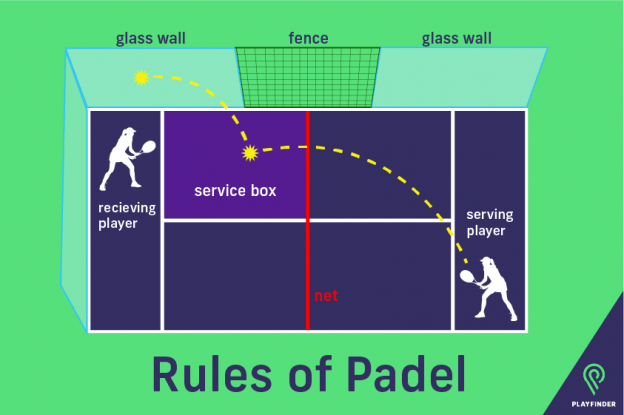What are the lines on a tennis court?
17 July 2020 • By - callumbrunning
What are the lines on a tennis court?
Have you ever wondered when sat watching Wimbledon, what all those marking on the court actually mean?
A player hits the ball and then depending on where it lands, a person usually bending down in beige trousers and a cardigan, shouts at top of their voice in a way that can only be described as the sound of someone stubbing their toe. But apparently they are saying ‘Out’ but why exactly? It looked a perfectly good shot to me!
To help people get a better understanding of the game and explain the infamous Tetris-like markings on the tennis court – we have outlined what each of these lines indicates and how this impacts each point.
The Baseline
First of all, both players must start each point with both feet behind the baseline, whether you’re the player serving or waiting to return your opponent’s serve. The baseline is where tennis players often find themselves in the game during a rally as this area gives the players the most time to react and to play their next shot. If the ball bounces beyond the baseline that is considered ‘out’ and the player that hit the ball loses the point.
Singles’ side-line
The single’s side-line is the outer wide edge of the singles court, which makes the court slightly narrower than the doubles court. Be it during a rally or through a service, if the ball lands beyond this line, this also considered ‘out’ and the player that hit the ball loses the point or must play a second serve. The single’s side-line is often where the players will play shots down the line balls to force their opponent out wide to create more space in the rest of the court to potentially win the point.
Doubles’ side-line or Tram lines
This is the second side-line you will encounter on the tennis court, making the court itself seem to have two outer columns. This line makes the court wider, giving doubles players more from to play and importantly, more margin for error.
The Net
The net divides the two halves of the court and is the only main obstacle in a tennis players view. The net does arch slightly and is lower in the centre. This makes those down-the-line shots slightly more difficult having to transport the ball over the highest point in the net. Some tennis players choose to approach the net to play volleys or drop shots. If a player hits the net during a rally, they lose the point. Upon service, hitting the net will result in a second serve. If the player serves the ball into the service box but slightly brushes the net, it is considered a ‘let’ service and must be retaken.

Credit: Active Nation https://activenation.org.uk/thelocker/reasons-to-take-up-tennis
Centre service line
The centre line is used to divide the two service boxes. Each point the server must play the ball into the opposite service box to begin the point. This alternates between each point throughout the match.
Service box
When a player begins the rally by serving, in order to make a legal shot – the player must hit the ball into the service box on their opponents’ side. Any serve that lands outside that box is considered ‘out’ and will result in a second serve. If the server fails to do this once again, this will result in a double fault and the server will lose the point.
Baseline centre mark
This mark indicates the centre point of the baseline and is used as a marker for where the server is allowed to stand during a service. Often players stand as close to this mark as possible to gain more coverage of the opponent’s service box and offer a better angle to play a service down the middle along the centre service line.
If you are looking to book a tennis court online click the link here.




